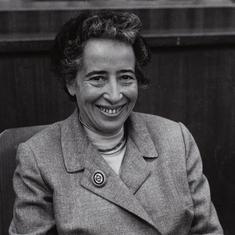Close to a decade ago, I served as a law clerk in the Supreme Court. I often stayed late and routinely came to work on weekends and public holidays to support the judge I was assigned to. Embattled by a gigantic caseload, his work seemed never-ending. Unfortunately, things haven’t changed. As of June 1, around 60,000 cases were pending before the Supreme Court.
Earlier this week, President Ram Nath Kovind gave his assent to the Supreme Court (Number of Judges) Amendment Bill, which will increase the number of Supreme Court judges from 30 to 33. Adding a few additional judges to the Supreme Court will not, in any significant or lasting way, reduce the judicial backlog. Instead, we must ask why thousands of cases are pending before the Court.
The Constitution makers envisioned that the Supreme Court would play a dual role: as an appellate court, and as a court with original jurisdiction over Centre-State disputes, cases involving substantial questions of law and matters of constitutional law. But only a small fraction of admitted cases are filed under the court’s original jurisdiction. It is appeals filed under special leave jurisdiction – exercised at the judges’ discretion – that overwhelm the Supreme Court. This is acknowledged in the Bill’s statement of objects and reasons, which notes that the number of appeals filed in the Supreme Court has increased, necessitating an increase in its strength.
US example
The Supreme Court need not admit every appeal. But it often does. One study found that in 2014, it admitted approximately 40% of the 35,000-odd appeals filed. Contrast this, for instance, with the US Supreme Court – eight judges in all – which receives approximately 7,000-8,000 petitions appealing a lower court’s decision. It hears oral argument in about 80 cases.
The Indian Supreme Court’s openness to appeals is best explained by its desire to correct as many injustices as possible, no matter how small. Supreme Court judges are drawn almost exclusively from the High Courts, which function primarily as appellate courts. The average Supreme Court judge has extensive experience in error correction – the key function of an appellate judge – rather than in adjudicating constitutional law questions. Given their experience, Supreme Court judges’ cognitive bias towards error correction is unsurprising.
But in reaching out to correct small injustices, the Supreme Court is doing a greater injustice. Justice PN Bhagwati, former Chief Justice of India, articulated this sentiment powerfully in one of his judgments. Acknowledging the agonising decisions that our judges make every day, he said, “Sometimes, we judges feel that when a case comes before us and we find that injustice has been done, how can we shut our eyes to it.”
“But”, he continued, “the answer to this anguished query is that the judges of the apex court may not shut their eyes to injustice but they must equally not keep their eyes too wide open, otherwise the apex court would not be able to perform the high and noble role which it was intended to perform according to the faith of the Constitution makers.”
A growing bench
Justice Bhagwati’s clarity notwithstanding, the Supreme Court, like the government, is prey to the misconception that case backlog and delay arise from having too few judges. Successive Chief Justices of India have endorsed expanding the judiciary as the primary solution. Thus, the strength of the Supreme Court – which was originally 10 – was increased to 13, then 17, 25, and finally 30. But the judicial backlog has only increased. In March 2007, shortly before the strength of the court was increased from 25 to 30, close to 42,000 cases were pending before it. In the decade since, the backlog has increased by around 20,000 cases. In other words, more cases were admitted than resolved.
If we want our judges to judge better, the government must do more than increase the strength of the Supreme Court. At a minimum, it must develop institutional mechanisms to collect, track and publish detailed statistics on cases filed in the Supreme Court –
including the number and types of appeals admitted by each judge –
to inject some transparency into its appellate function.
For far too long, the lack of adequate data on the Supreme Court’s functioning has scuttled opportunities for introspection and critique. And our judges must evolve a coordinated response to the high rate of admission of appeals. Having some, but not all judges, move in the direction of admitting fewer cases would be a Pyrrhic victory, making for an inconsistent, and ultimately unjust, Supreme Court.
It is time that the Supreme Court moved closer to the difficult balance that Justice Bhagwati articulated years ago. Less, as he hinted, is more.
Simi Rose George is a lawyer and public policy professional.










